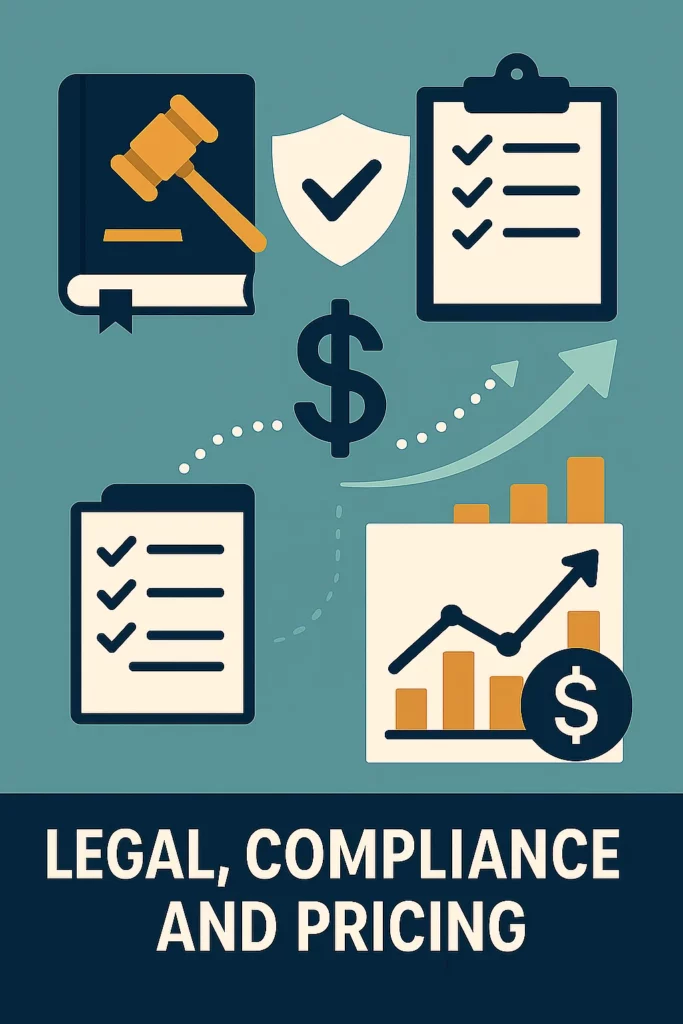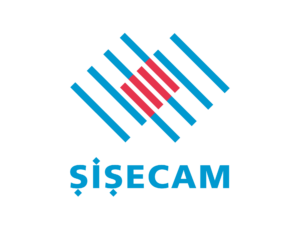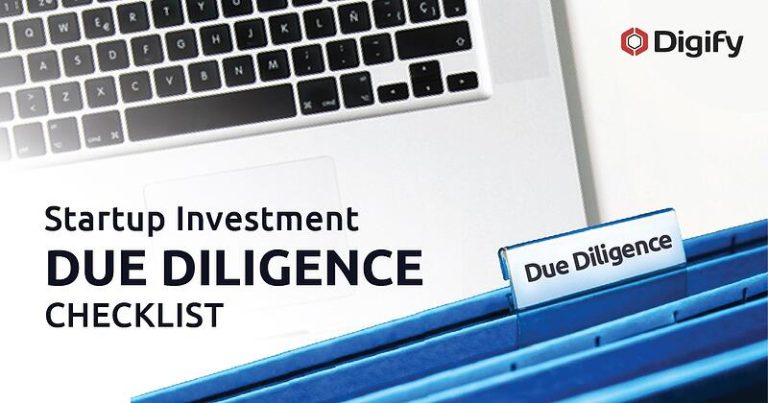This article is part of The Complete Guide to Raising Funds from LPs. The guide covers everything from defining your investment thesis and building strategic fundraising plans to mastering investor due diligence and navigating emerging trends like AI and ESG integration.
Each chapter builds on the previous ones to give you a complete fundraising playbook. While the article below is very informative, you’ll get the most value by reading the entire guide to see how you can fast-track your fundraising process.
Your fund’s legal, compliance, and pricing foundations are not merely technical considerations to be delegated entirely to counsel. They represent strategic decisions with profound implications for investor appeal, operational flexibility and, ultimately, your fund’s viability.
The Evolving Regulatory Landscape
The regulatory environment governing private funds is in a constant state of flux, driven by market developments, technological advancements, and shifts in policy priorities. Fund managers must therefore maintain a vigilant and proactive approach to compliance, understanding that today’s best practices may be tomorrow’s minimum requirements.
The SEC’s Heightened Focus on Private Funds
In August 2023, the Securities and Exchange Commission (SEC) in the US adopted significant new private fund rules under the Investment Advisers Act of 1940, creating the most substantial regulatory changes for the industry in over a decade. These rules impose expanded disclosure requirements, restrict certain activities, and mandate additional operational safeguards for fund advisers.
The new requirements include mandatory quarterly statements detailing fund performance, fees, and expenses, with different reporting standards for liquid versus illiquid funds. For private equity funds specifically, the rules require presentation of metrics such as IRR (Internal Rate of Return), MOIC (Multiple on Invested Capital), and detailed information on contributions and distributions. Additional provisions mandate disclosure of preferential treatment previously handled through side letters, annual fund audits, and fairness opinions for adviser-led secondary transactions.
While legal challenges to these rules are ongoing, fund managers should proactively prepare for implementation rather than adopting a wait-and-see approach. The increased compliance burden will particularly impact smaller funds with limited resources, potentially creating competitive advantages for larger, more established managers.
Registration Requirements and Exemptions
Understanding the registration framework for fund advisers remains essential for structuring your fund appropriately. Under the Advisers Act, investment advisers to private equity funds must generally register with the SEC unless they qualify for specific exemptions:
- Venture Capital Fund Adviser Exemption: Available to advisers solely managing venture capital funds that meet specific criteria and represent themselves as pursuing a venture capital strategy
- Private Fund Adviser Exemption: For advisers solely to private funds with less than $150 million in assets under management in the U.S.
- Foreign Private Adviser Exemption: For non-U.S. advisers with limited U.S. presence and fewer than 15 U.S. clients and investors
Advisers relying on the first two exemptions are considered “exempt reporting advisers” (ERAs) and must still file portions of Form ADV with the SEC, disclose basic information about their activities, and remain subject to certain anti-fraud provisions and examinations.
Registered investment advisers face more comprehensive obligations, including fiduciary duties to clients, implementing compliance programs, maintaining books and records, and filing Form PF for advisers with over $150 million in assets under management. The form provides regulatory authorities with information about fund size, leverage, liquidity, and investor composition, though this information is not made public.
Emerging Risk Management Priorities
Beyond formal regulatory requirements, fund managers must also address emerging risk priorities that increasingly influence investor due diligence and regulatory scrutiny:
- ESG Integration: Impact investing continues to gain prominence, with funds facing growing expectations to not just avoid harm but actively solve societal and environmental challenges. These investments require additional disclosures related to non-financial metrics while still maintaining a profit focus.
- Cybersecurity and Data Protection: Protecting investor data has become a fundamental compliance priority, with breaches potentially resulting in significant financial and reputational damage.
- Anti-Money Laundering (AML) and Know Your Customer (KYC): Private funds must implement robust procedures to verify investor identities and the sources of their funds, particularly as regulatory focus on financial crimes increases.
- Sanctions Compliance: Heightened geopolitical tensions have expanded sanctions regimes, creating additional compliance challenges for funds with international operations or investors, particularly those with exposure to politically sensitive regions.
Addressing these priorities requires not just technical compliance but proactive risk management that reassures investors and positions your fund favorably in an increasingly scrutinized market.
Strategic Fund Structuring Decisions
Selecting the Optimal Legal Structure
The various types of fund structures are outlined in chapter 2. While selecting one, you must ensure that your fund’s legal structure facilitates your strategy while meeting investor expectations and regulatory requirements. While closed-end limited partnerships remain the industry standard for most buyout and growth strategies, alternative structures may offer advantages for specialized approaches.
There are critical regulatory considerations to take note of when you make this selection, particularly under U.S. securities laws. Fund managers must choose appropriate exemptions for offering their securities and for avoiding registration as an investment company:
- Regulation D Exemptions (Rule 506(b) vs. Rule 506(c)):
- Rule 506(b): This is the traditional private offering method and prohibits general solicitation or advertising. It allows for an unlimited number of “accredited investors” and up to 35 “sophisticated non-accredited investors,” without requiring verification beyond reasonable belief.
- Rule 506(c): This option permits general solicitation and advertising, but requires all investors to be “accredited investors,” and the fund must take “reasonable steps” to verify that status. This choice impacts a fund’s marketing reach versus its investor verification burden.
- Investment Company Act Exemptions (Section 3(c)(1) vs. Section 3(c)(7)):
- Section 3(c)(1): Exempts funds with fewer than 100 beneficial owners (investors) from registration under the Investment Company Act of 1940. This is typically used by smaller to mid-sized funds.
- Section 3(c)(7): Exempts funds that sell interests solely to “qualified purchasers” (a higher threshold than accredited investors). This allows for an unlimited number of qualified purchasers, making it suitable for larger funds targeting institutional investors.
- Parallel Fund Structures: It is also common for funds to utilize parallel fund structures, involving two or more distinct legal entities (e.g., an onshore vehicle for U.S. taxable investors and an offshore vehicle for non-U.S. or U.S. tax-exempt investors). These structures allow funds to accommodate diverse investor types, manage tax implications, and navigate varying regulatory requirements across jurisdictions while investing in the same portfolio companies.
Fund Terms and Governance
Beyond the basic legal entity choice, fund terms and governance provisions significantly impact both investor appeal and operational flexibility:
- Fund Term and Extensions: While the standard 10-year term (with optional extensions) remains common, variations based on strategy are increasing. Venture funds may need longer terms to accommodate extended holding periods for early-stage investments, while secondary funds might operate with shorter timeframes.
- Investment Period: Typically 3-5 years, with the specific duration aligned with deployment expectations for your strategy. Investors increasingly scrutinize this period, seeking assurance that capital will be invested efficiently rather than sitting idle while earning management fees.
- Key Person Provisions: Critical for investor protection, these clauses define what happens if key investment professionals leave the firm. Well-crafted provisions balance investor security with reasonable operational flexibility.
- Investment Restrictions: Limitations on concentration, geography, leverage, or investment types that align with your stated strategy and provide guardrails for investors.
- Advisory Committee Structure: Determining the composition, rights, and responsibilities of the Limited Partner Advisory Committee (LPAC), including its role in addressing potential conflicts of interest.
These terms must be carefully calibrated to create a balanced partnership between you and your investors. Overly restrictive terms can hamper execution, while insufficient protections will deter sophisticated investors.
Tax Considerations and Structuring
Tax efficiency remains a crucial element of fund structuring that directly impacts investor returns and capital attraction. Take note of the following tax considerations:
- Pass-Through Taxation: Most private equity funds are structured as pass-through entities, allowing income and losses to flow directly to investors without entity-level taxation.
- UBTI Management: For tax-exempt investors such as pension funds and endowments, structures that minimize unrelated business taxable income (UBTI) are essential, often addressed through blocker corporations.
- International Tax Planning: For funds with global investors or investments, structures must address withholding tax requirements, treaty benefits, and potential permanent establishment concerns.
- Carried Interest Taxation: Understanding the tax treatment of carried interest (typically as long-term capital gains for assets held more than three years) and structuring accordingly.
- State and Local Tax Planning: Particularly for funds with operations across multiple states, minimizing unnecessary state tax exposure through clear structuring.
Effective tax planning requires close collaboration between fund counsel, tax advisors, and the management team, with structures typically tailored to accommodate the specific needs of different investor categories.
Fund Pricing and Economics
Attracting limited partners and ensuring sustainable operations for the general partner hinges on cleverly designed fund economics. Crucially, contemporary fee structures, carried interest mechanisms, and rigorous transparency in expense management foster strong, enduring investor relationships.
The Evolution of Fee Structures
While the traditional “2 and 20” model (2% management fee and 20% carried interest) remains a reference point, private equity fee structures have evolved considerably to reflect changing market dynamics and investor preferences.
Recent data from Callan’s 2024 Private Equity Fees and Terms Study, which analyzed 413 partnerships from 2018-2024, found that management fees during the investment period ranged from 1.5% to 2% for most funds, with larger funds often charging lower percentages on a sliding scale. Despite pressure for fee reduction, the study noted that “unlike trends observed in other asset classes (namely the public markets), private equity fees have not come down over time. Most private equity managers are not inclined to change their fees from one fund to the next, leading to relative stability in fees.”
The study also revealed that the vast majority of funds (84%) maintained an 8% preferred return hurdle rate, calculated on a compounded basis, before general partners (GP) could receive carried interest. Nearly all funds included in the study used a 20% carried interest rate, though variations exist across strategies and fund sizes.
Interestingly, recent research has also highlighted fee variation within individual funds. According to a study published in the Journal of Finance, management fees and carried interest can vary by approximately 91 basis points and 5.8% on average across different investor tiers within the same fund. This variation is substantially lower in venture capital funds compared to other private capital strategies.
Strategic Approaches to Management Fees
Management fees serve as the economic foundation for your firm’s operations and represent a critical consideration in fund structuring. There are some common strategic approaches you can explore when determining management fees:
- Tiered Fee Structures: Implementing declining fee percentages as fund size increases, addressing investor concerns about fee scaling for larger funds while maintaining sufficient economics for operations.
- Committed vs. Invested Capital Base: Determining whether management fees are calculated on committed capital during the investment period (standard approach) or on invested capital (potentially more investor-friendly but creating deployment pressure).
- Step-Down Provisions: Reducing management fees after the investment period concludes, typically moving to an invested or net asset value basis to reflect the changing nature of fund management activities.
- Fee Offsets: Crediting transaction fees, monitoring fees, or other income sources against management fees, with most funds now offering 100% offset to address investor concerns about double-dipping.
- Fee Discounts: Offering reduced fees for early commitments, larger investments, or strategic investors, while ensuring these arrangements comply with SEC requirements regarding preferential treatment disclosure.
The management fee approach must balance providing adequate resources for high-quality fund operations with investor sensitivity to fixed costs that reduce returns.
Carried Interest and Alignment Mechanisms
Carried interest represents the primary performance incentive and alignment mechanism between managers and investors. When thinking about carried interest structures, consider the following:
- Waterfall Structure: Choosing between:
- American (deal-by-deal) waterfalls that calculate carried interest on a per-investment basis
- European (whole-fund) waterfalls that require return of all invested capital plus the preferred return before any carried interest is paid
- Preferred Return: Setting the hurdle rate that must be achieved before carried interest is earned.
- Catch-Up Provisions: Determining the rate at which GPs receive distributions after the preferred return is met but before the standard carried interest split applies, typically structured to eventually reach the target carried interest percentage.
- Clawback Provisions: Implementing mechanisms to return excess carried interest if the fund’s overall performance falls below hurdle rates upon final liquidation, providing important investor protection.
- Vesting Schedules: Establishing how carried interest vests for individual team members over time, creating retention incentives while allowing for appropriate transitions when team changes occur.
These carried interest structures must carefully balance providing compelling incentives for the investment team with appropriate investor protections and returns.
Expenses and Transparency
The allocation of expenses between the management company and the fund has gained increased scrutiny from both investors and regulators. Here are some best practices worth following:
- Clear Expense Policies: Establish detailed guidelines on which expenses are borne by the fund versus the management company, aligned with industry standards and clearly disclosed to investors.
- Organizational Expense Caps: Set reasonable limits on expenses related to fund formation, including legal, accounting, and placement agent fees, that can be charged to the fund.
- Broken Deal Expense Allocation: Determine fair approaches for allocating expenses for unconsummated transactions, particularly when multiple funds or separate accounts might have participated.
- Fee Disclosure: Provide comprehensive, transparent reporting on all fees and expenses, anticipating the enhanced disclosure requirements under the SEC’s new private fund rules.
- Technology Investment: Implement systems to accurately track and allocate expenses, ensuring both compliance with stated policies and efficient reporting to investors.
Creating Compliant Fund Documentation
The legal and compliance documents underpinning your fund serve to protect both general and limited partners while defining the investment framework. Aim for precision in their drafting, as they are critical in meeting regulatory requirements and instilling investor confidence.
Private Placement Memorandum
The Private Placement Memorandum (PPM) serves as the primary disclosure document for potential investors and must be crafted to balance comprehensive information with strategic positioning.
The PPM should include disclosure of a few key aspects. It should provide thorough disclosure of material risks specific to your strategy, structure, and market conditions, while avoiding generic language that fails to meaningfully inform investors. It should present track record information in accordance with regulatory standards and industry best practices, with appropriate disclaimers and methodology explanations.
PPM disclosure should also clearly describe the investment approach in a manner consistent with your thesis while maintaining sufficient flexibility for execution across market conditions. Highlighting relevant experience and accomplishments of key team members is also important and so is a detailing of all aspects of the economic relationship between the fund, the manager, and investors with transparent explanations of calculation methodologies.
The PPM’s quality and completeness directly impact investor confidence and compliance positioning. While legal counsel will drive much of the drafting process, the management team must ensure the document accurately reflects their vision and capabilities. You will find more in-depth information and tips on how to go about crafting the various components of the PPM in Chapter 4.
Limited Partnership Agreement
As the legally binding contract between the GPs and LPs, the Limited Partnership Agreement (LPA) requires careful attention to both standard provisions and customized terms that reflect your strategy.
It should define management fees and economic terms precisely, along with carried interest calculations, expense allocations, and distribution waterfalls in legally enforceable language.
The LPA document is also where you establish governance rights, with clear parameters for investor involvement through the Limited Partner Advisory Committee (LPAC), including scope of authority, voting procedures, and conflict resolution mechanisms.
You will also have to document investment guidelines such as concentration limits, permitted investment types, leverage restrictions, and other parameters that define the fund’s operations.
Default provisions should outline consequences for investors who fail to meet capital calls, balancing deterrence with practical remedies. And last but not the least, this document should also specify reporting commitments, where you define the nature and frequency of financial reports, portfolio updates, and other information to be provided to investors.
Think of the LPA serving as a fair framework that protects legitimate interests of all parties rather than an adversarial document. Working with experienced fund formation counsel who understand market standards is essential for creating an agreement that will withstand investor scrutiny while providing operational clarity.
Subscription Documents
Subscription materials are documents that facilitate the investor onboarding process while ensuring regulatory compliance. To prepare these, keep the following key points in mind:
- Investor Qualification: Verify that all investors meet accredited investor, qualified purchaser, or other applicable standards through appropriate questionnaires and certifications.
- AML/KYC Compliance: Collect necessary documentation to satisfy anti-money laundering and know-your-customer requirements. This is particularly important in today’s heightened regulatory environment.
- Tax Documentation: Gather appropriate tax forms to enable proper reporting and withholding, including specialized documentation for non-U.S. investors.
- Side Letter Process: Establish efficient mechanisms for negotiating and documenting additional terms with specific investors, while ensuring compliance with disclosure requirements for preferential treatment.
- Electronic Subscription Platforms: Consider technology solutions that streamline the subscription process while maintaining regulatory compliance, increasingly expected by sophisticated investors.
Well-designed subscription materials balance thorough diligence with investor convenience, creating a positive first experience with your fund’s operations.
The legal, compliance, and economic foundations of your fund are not mere technical details; they represent strategic decisions that directly impact fundraising success, operational efficiency, and ultimately, investor returns. As regulatory requirements continue to expand and investor expectations for transparency and alignment increase, excellence in these structural elements has become a competitive differentiator.
By approaching legal, compliance, and pricing decisions with strategic intent rather than viewing them as administrative hurdles, you position your fund for sustainable success in an increasingly competitive and scrutinized market. The investment in getting these elements right from the beginning pays dividends throughout your fund’s lifecycle, from initial fundraising through final distributions.









